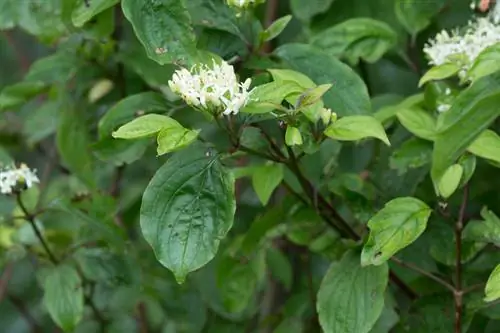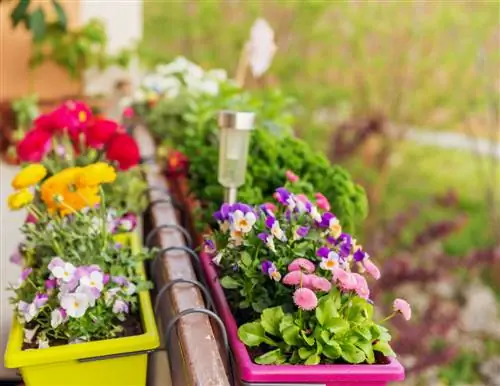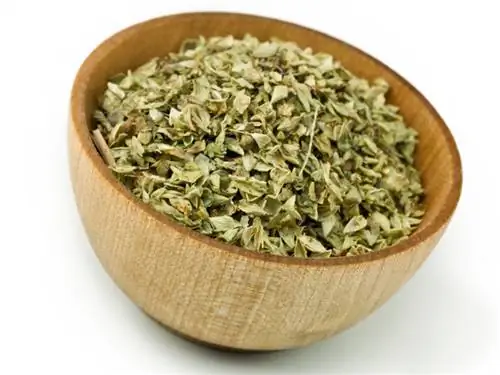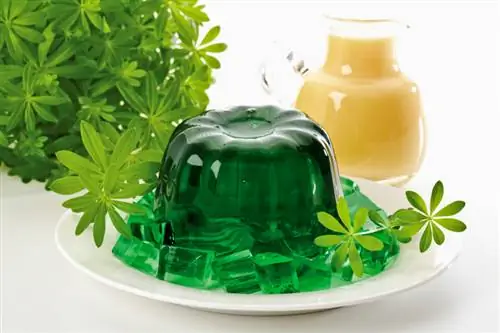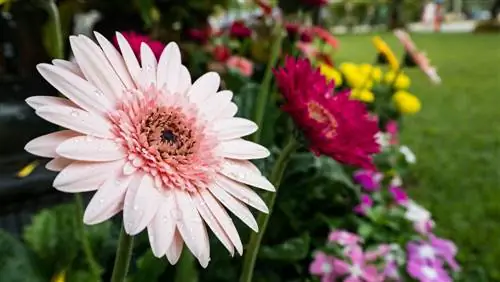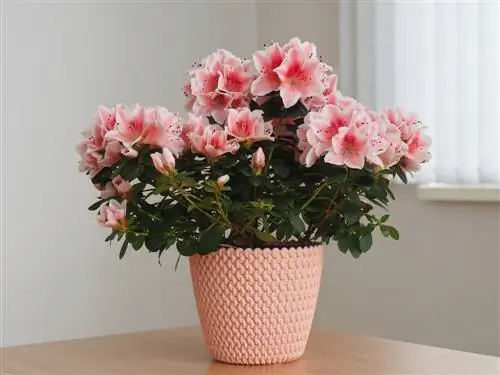- Author admin [email protected].
- Public 2023-12-25 17:45.
- Last modified 2025-01-23 11:20.
Red dogwood impresses with impressive colors all year round. White umbel flowers appear on its initially grey-green branches from May to June. The fresh green foliage takes on a bright wine-red color in autumn to strikingly underline the black-red berries. Following the shedding of the leaves, the now bright wine-red branches will shine throughout the winter. These answers to frequently asked questions reveal how you can cultivate the native shrub in the garden.
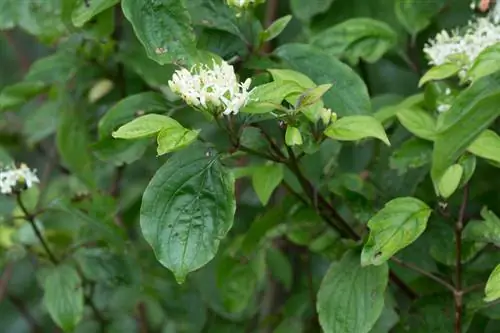
What are the care requirements of the red dogwood?
Red dogwood impresses with its bright red branches in winter, white flowers in spring and wine-red autumn foliage. For optimal growth, it needs a sunny location, nutrient-rich soil, regular watering and annual pruning of the older branches.
Planting red dogwood correctly
Young plants are offered in specialist retailers as container goods, which has the advantage of a flexible planting time. Ideally, you should plant a red dogwood in the sun-warmed soil in autumn. Choose a sunny location with nutrient-rich soil to dig a planting pit with twice the volume of the root ball. Add additional compost (€12.00 at Amazon) and horn shavings to the soil for a vital start to plant life. Please note that the ball of soil ends flush with the garden floor. Finally, water and mulch with leaves, pine needles or bark mulch.
Care tips
If you pay attention to the following care measures, you will enjoy your red dogwood for many years:
- Water the shrub regularly as soon as the surface has dried
- In autumn and spring, fertilize organically with compost, horn shavings or a slow-release fertilizer
- During the leafless period, carefully thin out the wood and remove 3-5 of the oldest branches
- Short shoots that are too long immediately after flowering
The native ornamental shrub does not need winter protection. Freshly planted specimens still receive a layer of leaves on the root disc, as the robust winter hardiness has not yet fully developed.
Which location is suitable?
The basic requirement for the branches to turn red in winter is a sunny location. Although a Cornus sanguinea thrives equally well in partially shaded locations, you will look in vain for the red twigs in low-light locations. The ornamental tree proves to be tolerant of the soil conditions. In any normal, freshly moist to moderately dry soil, the shrub meets expectations.read more
What soil does the plant need?
In soil rich in nutrients and bases, you will get the best out of a red dogwood. The ornamental shrub thrives best in fresh, moist to moderately dry clay or loamy soil with a deep structure. The tree will not take root in waterlogged or poor soil.
Cut red dogwood correctly
A red dogwood only lives up to its name when it is pruned every year. It is only the annual shoots whose bark turns bright red in winter. The older branches take on a drab, gray color and become increasingly bald. How to cut the ornamental tree correctly:
- Immediately after flowering, shorten shoots that are too long by half to two thirds
- Make each cut 2-3 mm above an outward-facing leaf node
- Remove 3-5 specimens from the oldest branches close to the ground
Consistent thinning is essential to create space for the young branches. These measures can also be carried out during the leafless winter period when you have a better view of the branch.read more
Watering red dogwood
Regular watering during summer droughts is one of the mainstays of professional care. If there is no rain, water the red dogwood when the top 2-3 cm of soil is dry. Avoid overhead irrigation so that the ornamental tree does not fall victim to fungal infections, which find ideal living conditions on damp leaves.
Fertilize red dogwood properly
With organic fertilization in autumn, you can set the stage for lush spring blossoms. Work ripe compost, leaf compost, bark humus or guano granules superficially onto the root disc with the rake and water again. Repeatedly spraying the mulch layer with potassium-rich comfrey manure is an advantage in order to strengthen winter hardiness. Shortly before flowering begins, the shrub receives another portion of compost for a vital start to the season.
Wintering
As a native tree, red dogwood is well prepared for the cold season. Adult specimens cannot be disturbed by bitter frost and a thick blanket of snow. We still recommend light winter protection in the year of planting, as complete cold resistance is not yet present. Spread a layer of leaves on the root disk and place coniferous twigs over it.
Propagate red dogwood
The following propagation methods are suitable for breeding additional ornamental shrubs:
- Plant non-flowering head cuttings in pots with lean substrate in April/May
- In summer, pull half-woody branches to the ground and cover the middle with soil so that a root system forms there
- Cut cuttings from woody branches in winter to let them root in the pot or bed
In addition, red dogwood produces strong runners. Use the spade to cut these off in order to plant 5-10 cm long pieces in the nutrient-rich soil at the new location.
Red dogwood in pot
The dwarf dogwood, which rarely exceeds a height of 80 cm, is primarily suitable for pot cultivation. Only fill the container plant soil into the container once you have spread a few pieces of pottery on the bottom of the pot as drainage. Water the ornamental tree regularly as the substrate dries out quickly in a sunny location. From April to August, apply liquid fertilizer every 3-4 weeks. To prune, shorten branches that are too long immediately after flowering. In late winter, you can create space for young shoots by carefully thinning them out, which will attract everyone's attention next year with their fire-red bark.
Is red dogwood poisonous?
The leaves are covered with fine hairs that can cause allergies and inflammation when they come into contact with the skin. Therefore, always wear gloves when approaching the shrub for maintenance work. In addition, the small berries are extremely popular in the bird world, but are inedible for the human stomach. Since intentional or unintentional consumption causes symptoms of poisoning, this species of dogwood is not suitable for the family garden.read more
Beautiful varieties
- Winter Beauty: Compact Cornus sanguinea with orange-yellow autumn leaves and scarlet winter branches
- Midwinter Fire: The winter-colored branches glow like a flickering fire when the yellow-orange leaves have fallen
- Compressa: Decorative dwarf dogwood for the small garden thanks to a graceful growth height of 80 cm
- Sibirica: Impressive redwood dogwood Cornus alba, whose annual shoots are covered in coral-red bark; 200-300cm

